This article shines a light on nine essential ABA (Applied Behavior Analysis) behavioral services that every parent should know about. These services play a crucial role in supporting children, especially those with autism. 🌟 Personalized interventions, early intervention, parent training, and collaboration with schools are all key factors that can significantly boost the effectiveness of ABA services. When these elements come together, they pave the way for better developmental outcomes for our children.
Let’s explore this together! By understanding these services, you can feel empowered to take action. Imagine how personalized support can make a difference in your child's life. It’s all about creating a nurturing environment where they can thrive. We’re here to help you every step of the way!
Navigating the landscape of Applied Behavior Analysis (ABA) can truly be a game-changer for parents seeking support for autism. With a staggering 1 in 44 youth diagnosed with autism spectrum disorder, the demand for effective behavioral services has never been more pressing. In this article, we'll explore nine essential ABA behavioral services that empower parents. We’ll share insights into personalized interventions, the importance of early training, and collaborative strategies that can enhance your child's development.
But what happens when access to these vital services is hindered by financial barriers or a lack of understanding? 🤔 Exploring these challenges not only reveals opportunities for growth but also highlights the critical steps you can take to advocate for your child’s needs. Let’s explore this together!
At Rori Care, we understand that every young individual has unique needs. That's why we provide customized ABA behavioral services specifically tailored just for them. Through thorough assessments, we develop treatment strategies that focus on personal challenges and strengths, making our interventions more effective. Did you know that studies show intensive and prolonged ABA behavioral services can significantly enhance outcomes for individuals with autism? In fact, there's an impressive success rate of 89% when using ABA for treating autism.
This personalized approach not only creates a nurturing environment for kids to thrive but also aligns with research suggesting that early and intensive intervention leads to better outcomes, including improved communication and social skills. Plus, we incorporate AI technology to enhance these individualized plans, allowing for real-time adjustments based on how the child is progressing during treatment sessions.
As one parent noted, "The structured yet adaptable nature of these individualized plans plays a significant part in achieving positive outcomes." This innovative use of technology ensures that each child's experience with ABA behavioral services is as effective and supportive as possible. We're dedicated to providing high-quality, data-driven care for autism.
So, if you're a parent looking to maximize your child's potential, we encourage you to explore our ABA behavioral services. Let’s explore this together! We’re here to help you every step of the way!
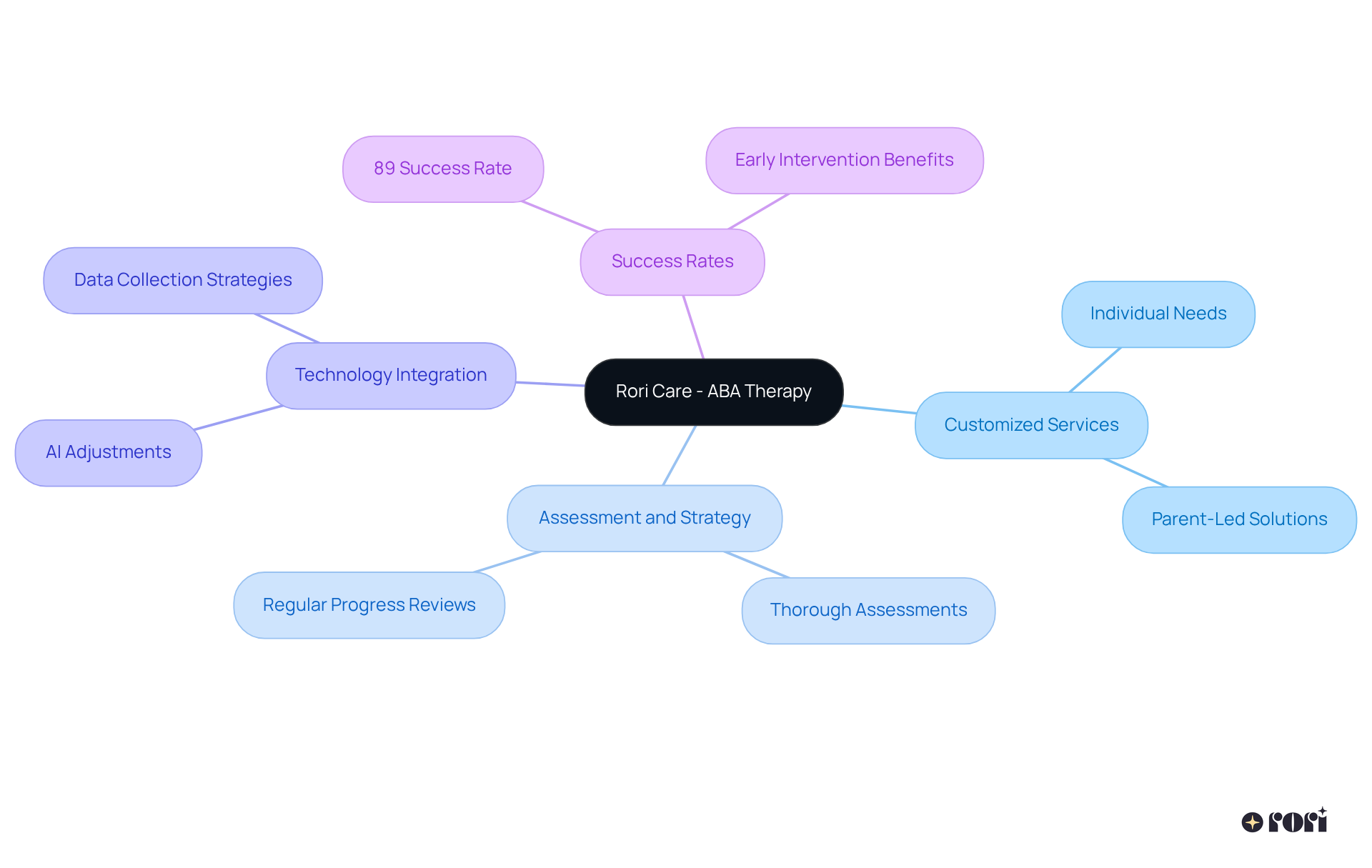
Applied Behavior Analysis (ABA) is built on foundational principles like reinforcement, prompting, and shaping, which are key for effectively changing behaviors. Think of reinforcement as a way to encourage those desired actions through rewards. Meanwhile, prompting provides helpful cues to assist individuals in starting or completing tasks. These techniques are essential for promoting skill development and reducing challenging behaviors.
Research shows that early and intensive ABA intervention can lead to significant improvements in communication and social skills, especially when reinforcement strategies are in play. For instance, young individuals who receive consistent reinforcement for positive behaviors often show increased engagement and motivation—both of which are crucial for their overall growth. It’s important to note that 1 in 44 youth in the United States are diagnosed with autism spectrum disorder each year, highlighting the need for effective ABA behavioral services.
You can see real-world applications of these principles all around us. Imagine a young individual learning to communicate who receives verbal praise or tangible rewards when they successfully express their needs. This positive reinforcement not only encourages them to repeat the behavior but also boosts their confidence in social interactions.
Recent studies have pointed out just how effective reinforcement and prompting techniques can be in the context of ABA behavioral services. Information indicates that young individuals who begin treatment early, particularly before age two, show fewer signs of autism and enhanced social communication skills. This really underscores the vital role of early intervention for individuals diagnosed with autism spectrum disorder (ASD). As Yitz Diena notes, "Early therapy offers youngsters the chance to develop and enhance essential skills during their formative years."
Statements from ABA therapists really emphasize the importance of these methods. One therapist shares, "Reinforcement is not solely about rewards; it's about creating an environment where young learners feel inspired to grow and progress." Another adds, "Prompting is essential for guiding young learners through new tasks, helping them build independence over time."
By understanding and applying these fundamental principles, parents can create a nurturing learning environment at home, ensuring that treatment sessions align with everyday life. This collaborative approach not only enhances the effectiveness of ABA behavioral services but also empowers parents to actively participate in their children's development. Additionally, it’s crucial to acknowledge the challenges families face in accessing ABA behavioral services, including financial barriers and disparities in care, which can impact the availability of these essential services.
Let’s explore this together and find ways to support one another in this journey!
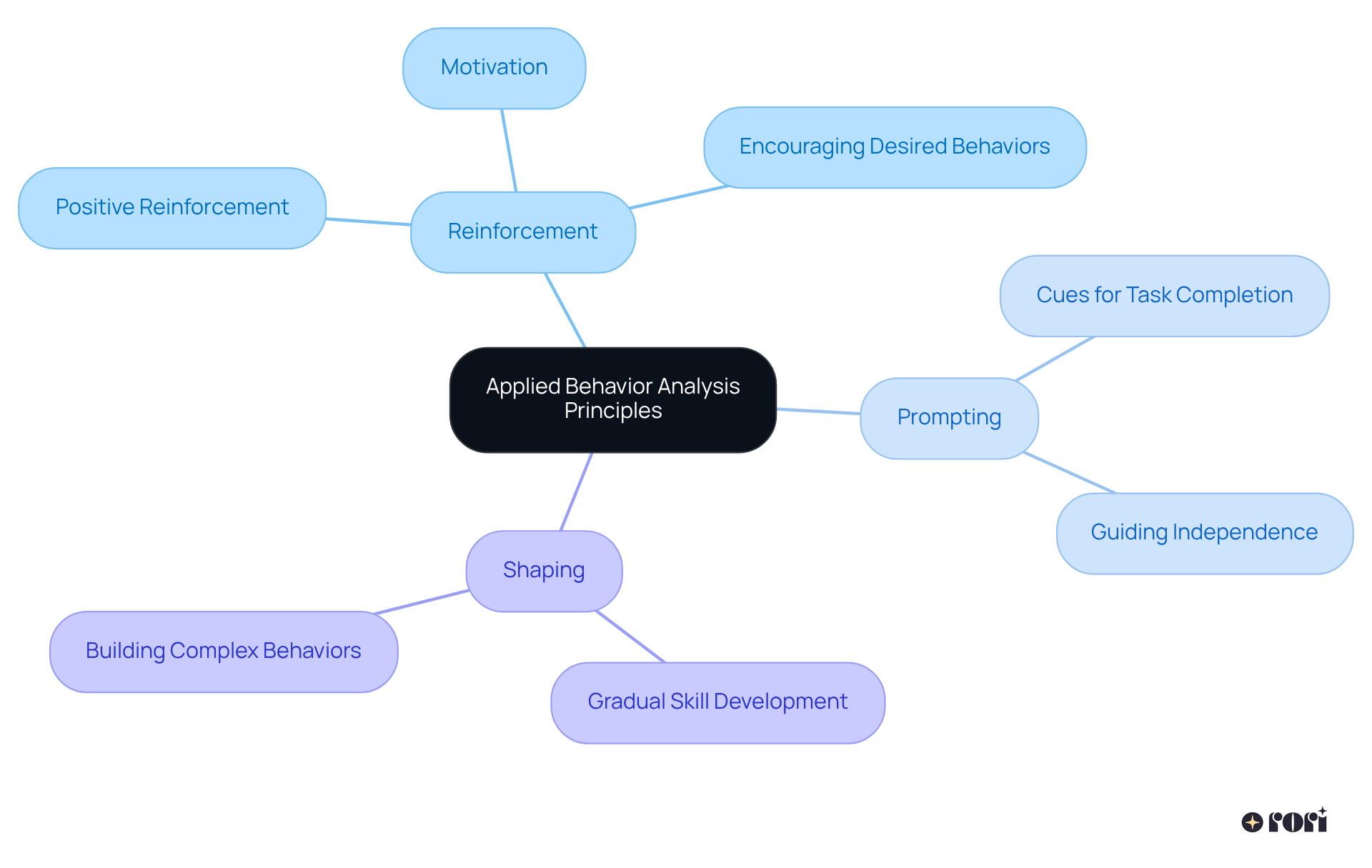
Behavioral evaluations play a crucial role in ABA treatment, offering valuable insights into a young person's specific actions, triggers, and learning preferences. These evaluations empower healthcare professionals to develop tailored strategies that meet each individual's unique needs. By using various assessment tools, like direct observation and parent interviews, therapists can create a detailed profile that shapes the treatment plan.
This personalized approach not only enhances treatment effectiveness but also encourages meaningful growth in young individuals, especially in areas such as communication, social skills, and adaptive behaviors. Research shows that children receiving customized interventions based on thorough evaluations make significant strides in these domains. Plus, data collection methods, like frequency recording and ABC charts, help pinpoint common triggers and patterns, leading to more responsive and effective treatment plans.
By integrating these insights, ABA treatment can achieve even better outcomes. In fact, studies indicate that personalized interventions contribute to an impressive success rate of over 89% in supporting individuals with autism spectrum disorder. Let’s explore this together and see how these evaluations can truly make a difference in your child's journey!
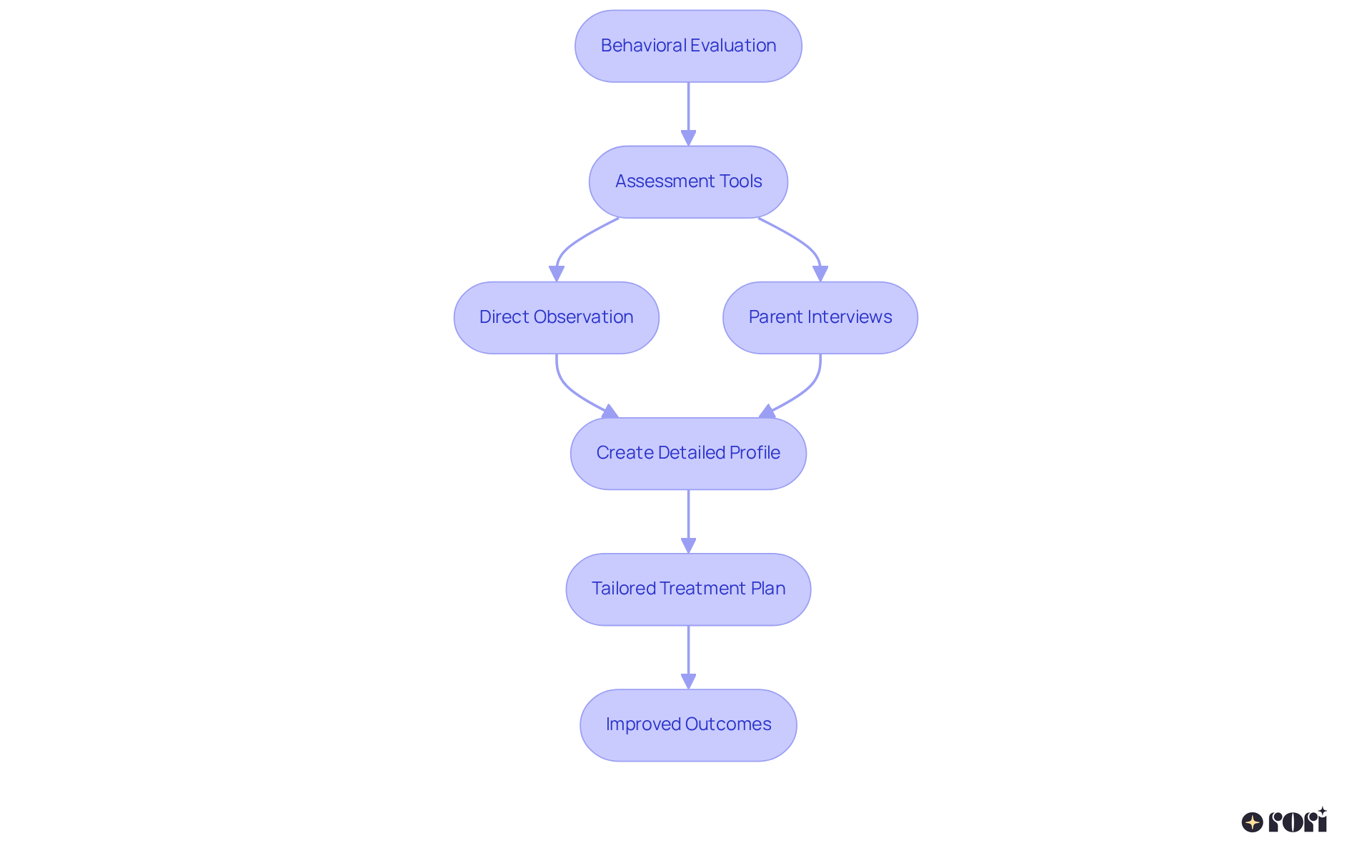
Parent training programs are essential for equipping families with the skills and knowledge they need to support their little ones' ABA treatment effectively. These programs empower parents to apply techniques from ABA behavioral services at home, reinforcing the skills learned during treatment sessions. Studies show that when parents actively participate in training, they not only gain a deeper understanding of their child's behavior but also enhance communication and create a more positive learning environment. This collaborative approach significantly boosts the effectiveness of treatment, leading to better outcomes for children.
For instance, research indicates that children whose parents are involved in their ABA sessions show greater behavioral progress and better adherence to treatment plans. Plus, parents often feel more confident in their parenting abilities and more connected to their children after participating in these programs. Isn’t that wonderful? Notably, 62.6% of eligible families enrolled in the SFSW program, and a remarkable 87.1% completed it, showcasing the success of these initiatives.
However, there are still challenges to address. Parents experiencing depressive symptoms were less likely to finish the program, highlighting the need for tailored support. By fostering a strong partnership between parents and therapists, these training programs ultimately strengthen the parent-child bond and contribute to the child's long-term success in treatment. Let’s explore this together! We're here to help you every step of the way!
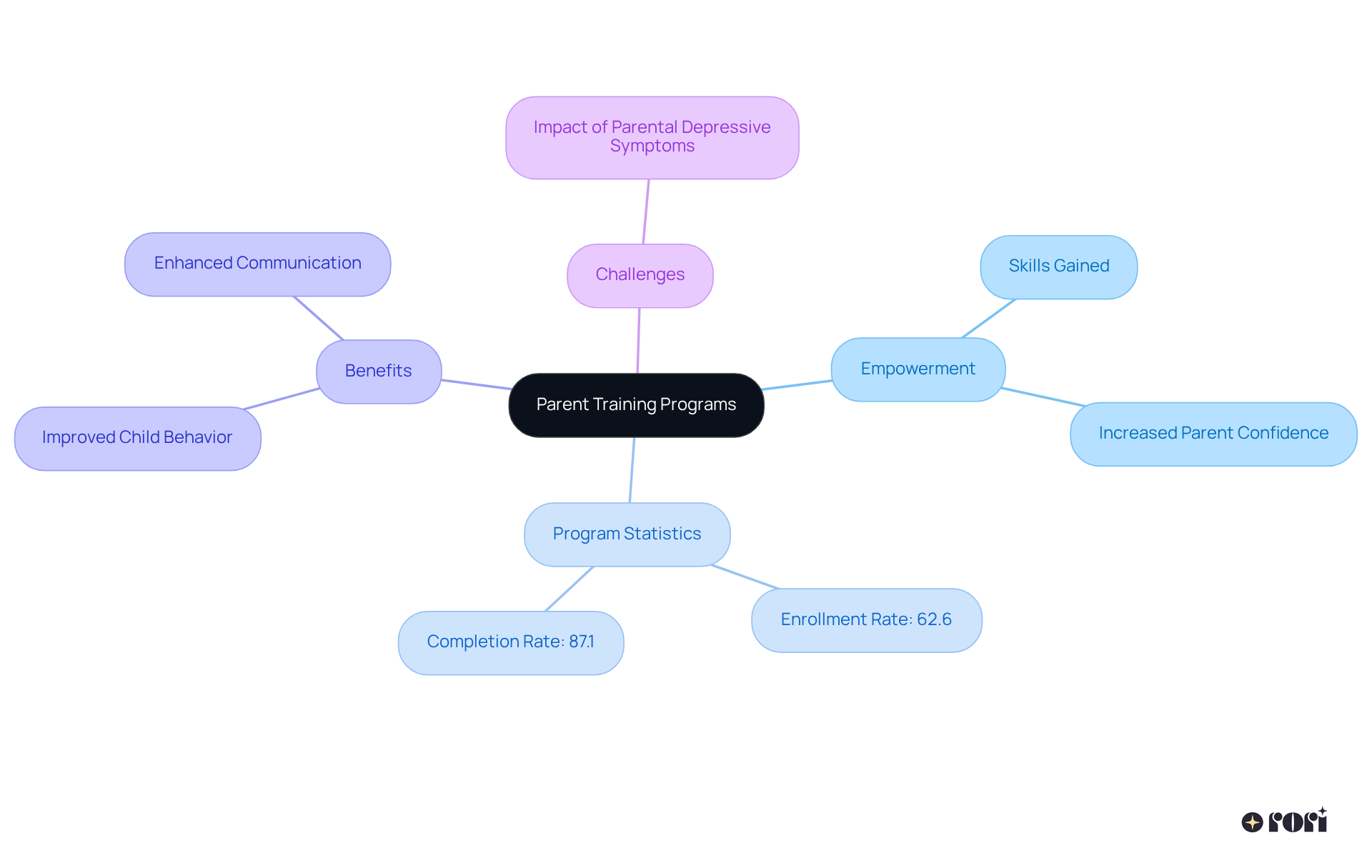
Social skills training is a key component of ABA behavioral services, assisting young individuals in developing essential interpersonal abilities. Through fun activities and role-playing, they learn to start conversations, read social cues, and build friendships. Research shows that social skills training can lead to meaningful improvements in how youngsters interact socially, with effect sizes between 0.28 and 0.60—indicating a small to moderate impact on enhancing these abilities.
For instance, many kids involved in these programs often feel more confident in social settings, which helps them navigate peer interactions more effectively. However, it’s important to remember that the success of social skills training can differ based on the type of intervention and the unique characteristics of each participant. By weaving ABA behavioral services that include social skills training into a personalized therapy plan, parents can empower their children to thrive in social environments, ultimately boosting their overall quality of life.
As one therapist wisely remarked, "The development of social skills is crucial for children with autism, as it lays the foundation for meaningful relationships and emotional growth." Plus, keeping an eye on progress during these interventions is vital to ensure that improvements in social skills are genuinely meaningful. Let’s explore this together and see how we can support our kids on this journey!
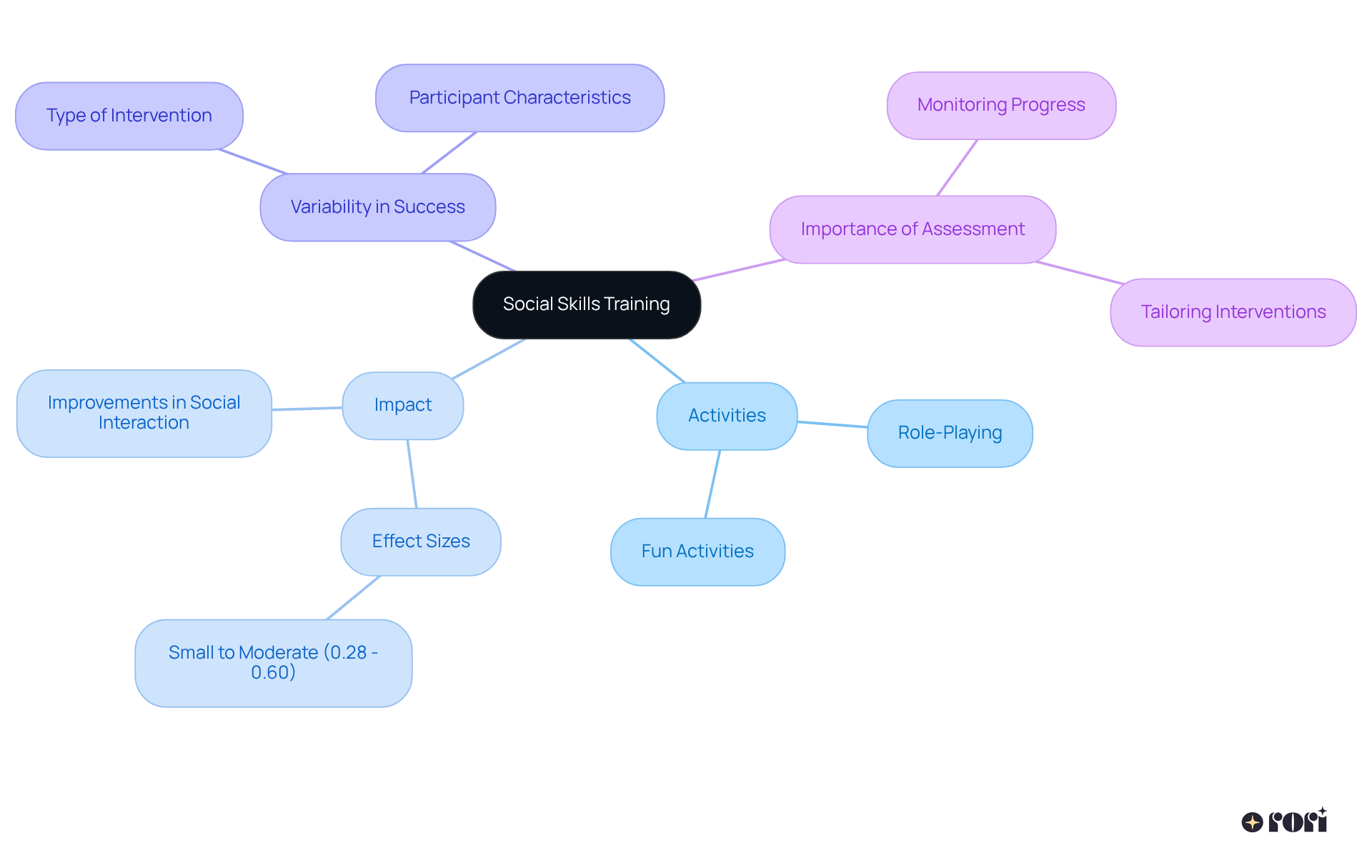
Functional behavior assessments (FBAs) are a great way to understand the reasons behind certain actions, especially those that can be challenging. By looking at what happens before and after these actions, therapists can develop targeted interventions that address the root causes. This insight not only helps therapists but also allows parents to work together in crafting effective strategies that promote positive changes while reducing those tricky behaviors.
Let’s explore this together! Understanding these assessments can feel overwhelming, but remember, you’re not alone in this journey. Many parents face similar challenges, and by collaborating with professionals, you can create a supportive environment for your child. We’re here to help you every step of the way!
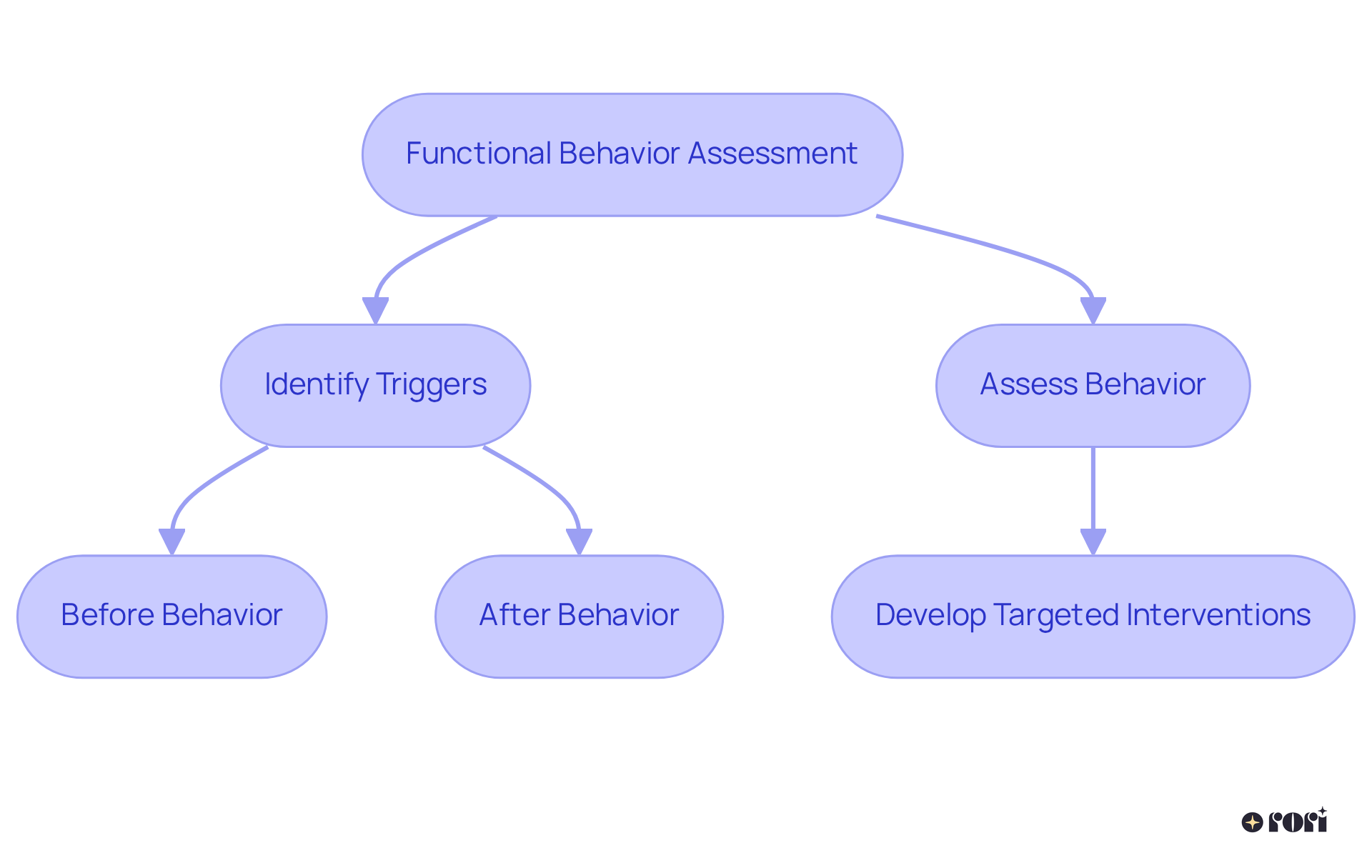
Data collection and analysis play a vital role in ABA intervention, providing clear insights into a young person's progress. Therapists carefully track behaviors using methods like frequency recording and ABC data collection. This systematic approach allows them to see changes and evaluate how effective the interventions are. By continuously assessing the situation, they can make quick adjustments to treatment strategies, ensuring they meet the evolving needs of the young person.
For example, studies show that after introducing a hybrid ABA treatment model, the success rate for goals improved by 9.7% compared to baseline measures, with 76% of patients having multiple goals trending upward. Isn’t that encouraging? Parents are invited to join in this process by sharing their observations and insights. This not only enhances the data collection efforts but also nurtures a collaborative spirit in therapy.
It’s important to remember that ethical considerations around consent and data sharing are crucial in this data-driven practice. When families participate, they gain a deeper understanding of their child’s journey and can play an active role in achieving meaningful outcomes. Let’s explore this together! We’re here to help you every step of the way!
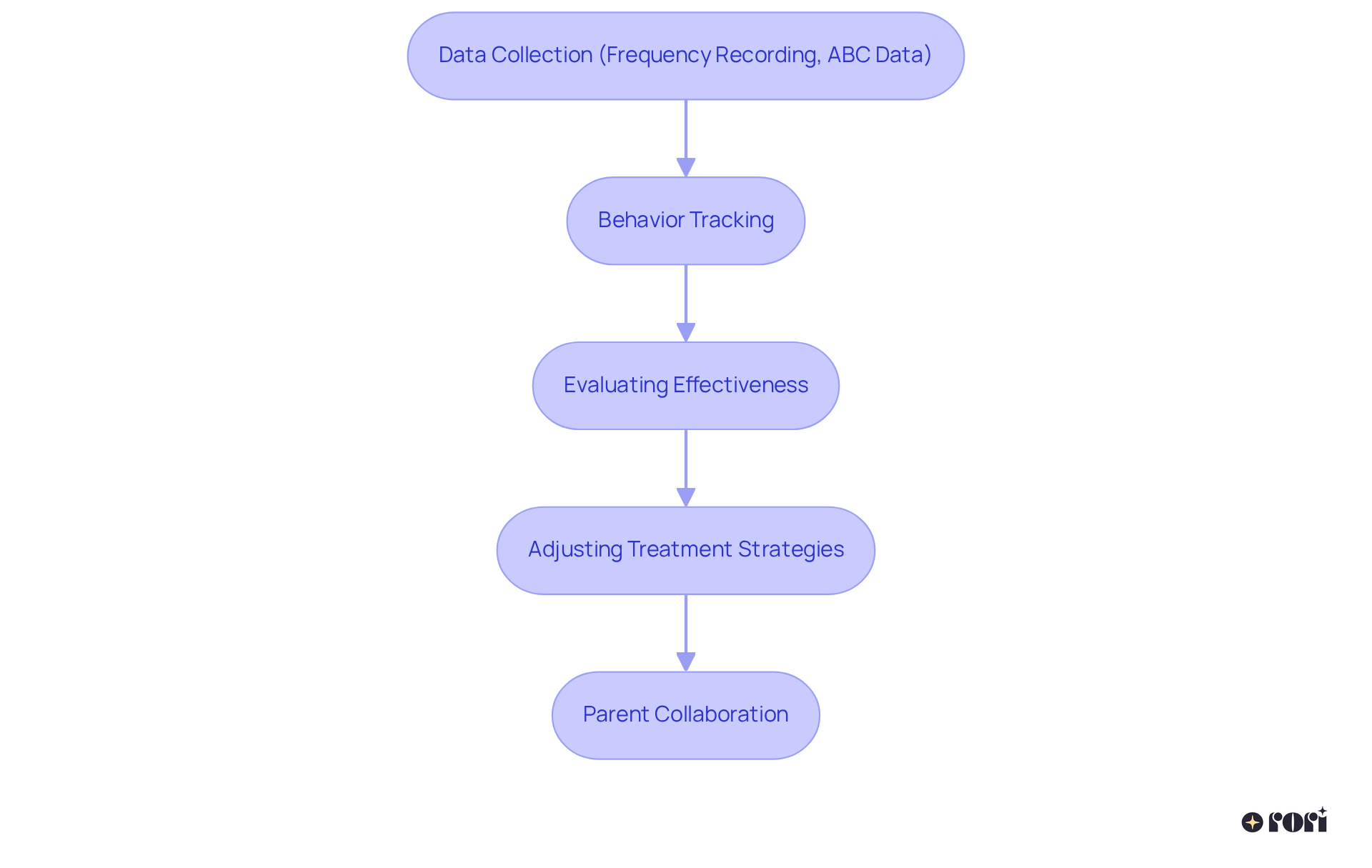
Crisis intervention strategies are super important for managing those unexpected challenging behaviors that can pop up. These strategies focus on:
By understanding common triggers—like stress, confusion, or unmet needs—parents can take proactive steps to prevent crises from escalating. Training in these strategies equips families with the vital tools to handle tough situations, fostering a sense of support and safety for both the youth and the family.
By concentrating on positive coping strategies and celebrating small victories, parents can help their kids build resilience and improve their overall behavior. Did you know that over 70% of sworn officers have completed specialized de-escalation training? This really highlights how crucial effective training is in crisis management. So, let’s explore this together and find ways to support each other through these challenges!
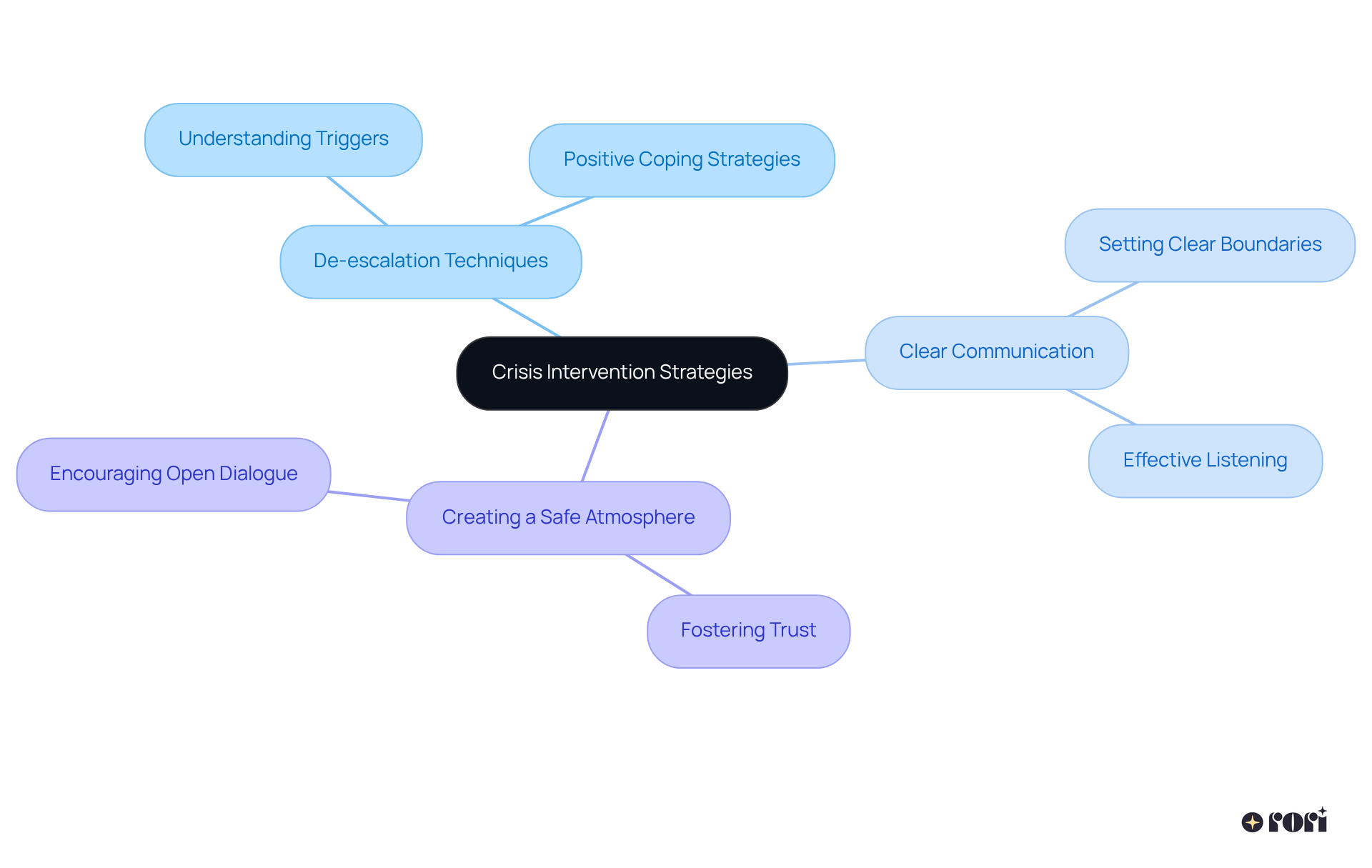
Cooperation with schools is so important for providing young people with consistent support in both therapeutic and educational settings. When educators and ABA behavioral services providers join forces, they can align their strategies, share valuable insights, and create a supportive system tailored to each child's unique needs. This teamwork not only strengthens the skills learned in treatment but also helps those skills shine in the classroom. Research shows that students receiving ABA behavioral services in schools see significant improvements in academic performance, behavior, and social skills, with effect sizes indicating medium to large enhancements post-treatment. This really highlights how effective this collaborative approach can be!
Parents are key players in making this collaboration work by keeping open lines of communication with both therapists and teachers. Their involvement ensures that strategies are consistently applied both at home and in school, boosting the overall effectiveness of the intervention. As one educator beautifully put it, "Fostering a supportive environment where students with special needs can integrate seamlessly into classroom activities is essential for their growth and development." However, it’s worth noting that only 28% of young individuals receive a 'full dose' of ABA sessions. This emphasizes how crucial it is for educators and parents to work together to maximize the effectiveness of each session of ABA behavioral services. By collaborating, everyone involved can create a nurturing environment that helps youth thrive academically and socially. Let’s explore this together!
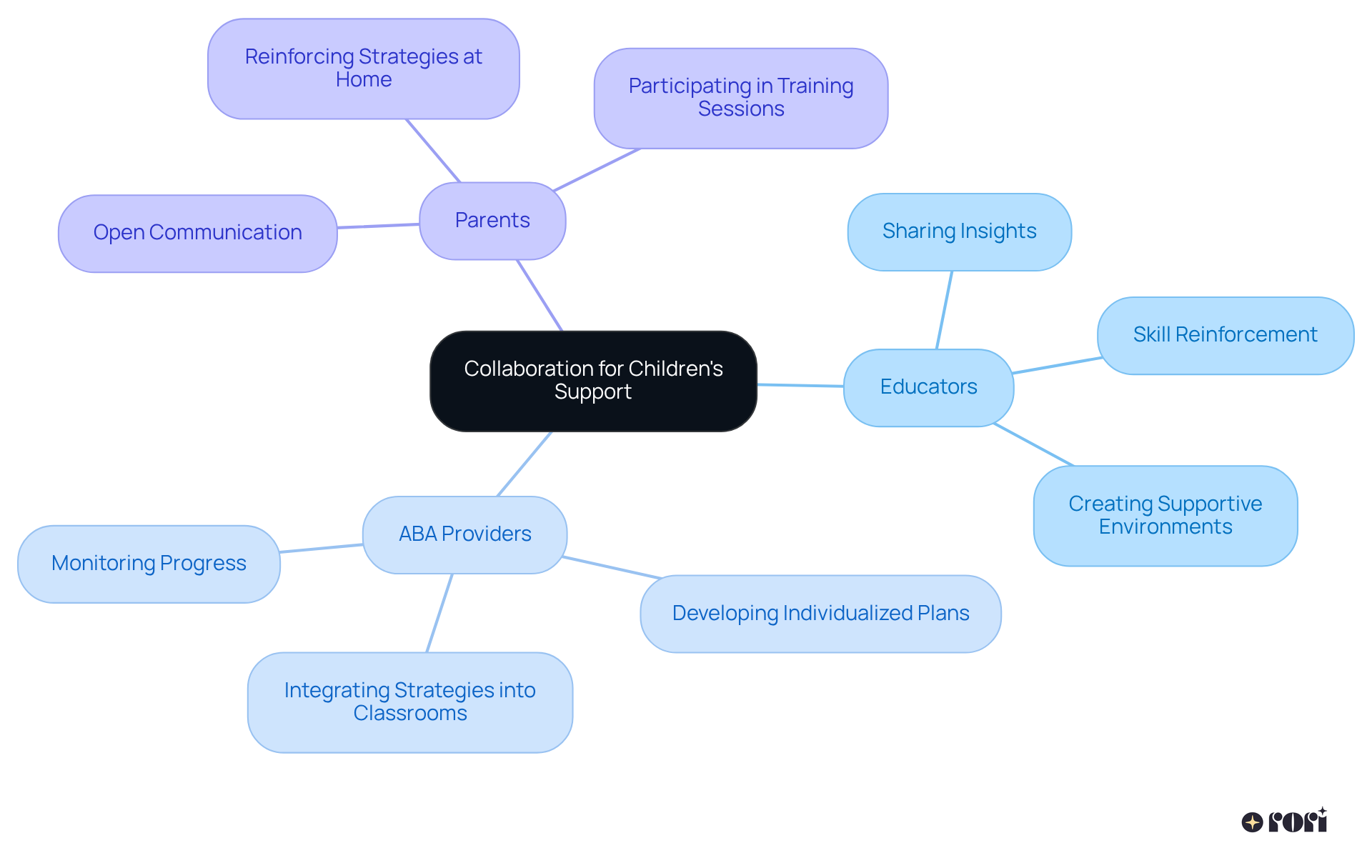
Navigating insurance coverage for ABA behavioral services can feel a bit overwhelming, but understanding your options is so important for obtaining the treatments your child needs. Did you know that 49 states in the U.S. have regulations that require some level of insurance coverage for autism interventions, including ABA behavioral services for children? However, the details can vary quite a bit. For example:
It’s essential for parents to take a close look at their insurance policies to identify any restrictions, like how many counseling hours are covered or if prior approval is necessary. Understanding insurance lingo is key when chatting with representatives.
Advocating for your child's needs is crucial. Families can make the most of their coverage by ensuring they get prior authorization, stay within their insurance network, and follow their insurance guidelines. Connecting with insurance representatives can really help clarify coverage specifics and ease any confusion. As supporters often emphasize, knowing your rights and the ins and outs of your health plan can make a big difference in accessing effective ABA behavioral services. Advocacy strategies can vary depending on whether a family has a self-funded or fully insured health benefit plan. Plus, it’s good to remember that ABA treatment can cost anywhere from $50 to $150 per hour without insurance, which makes having coverage really essential. By staying informed and proactive, families are encouraged to reach out to their insurance company or a qualified healthcare provider for accurate information about coverage for ABA behavioral services. This way, they can secure the support necessary for their child's growth and well-being. Let’s explore this together!
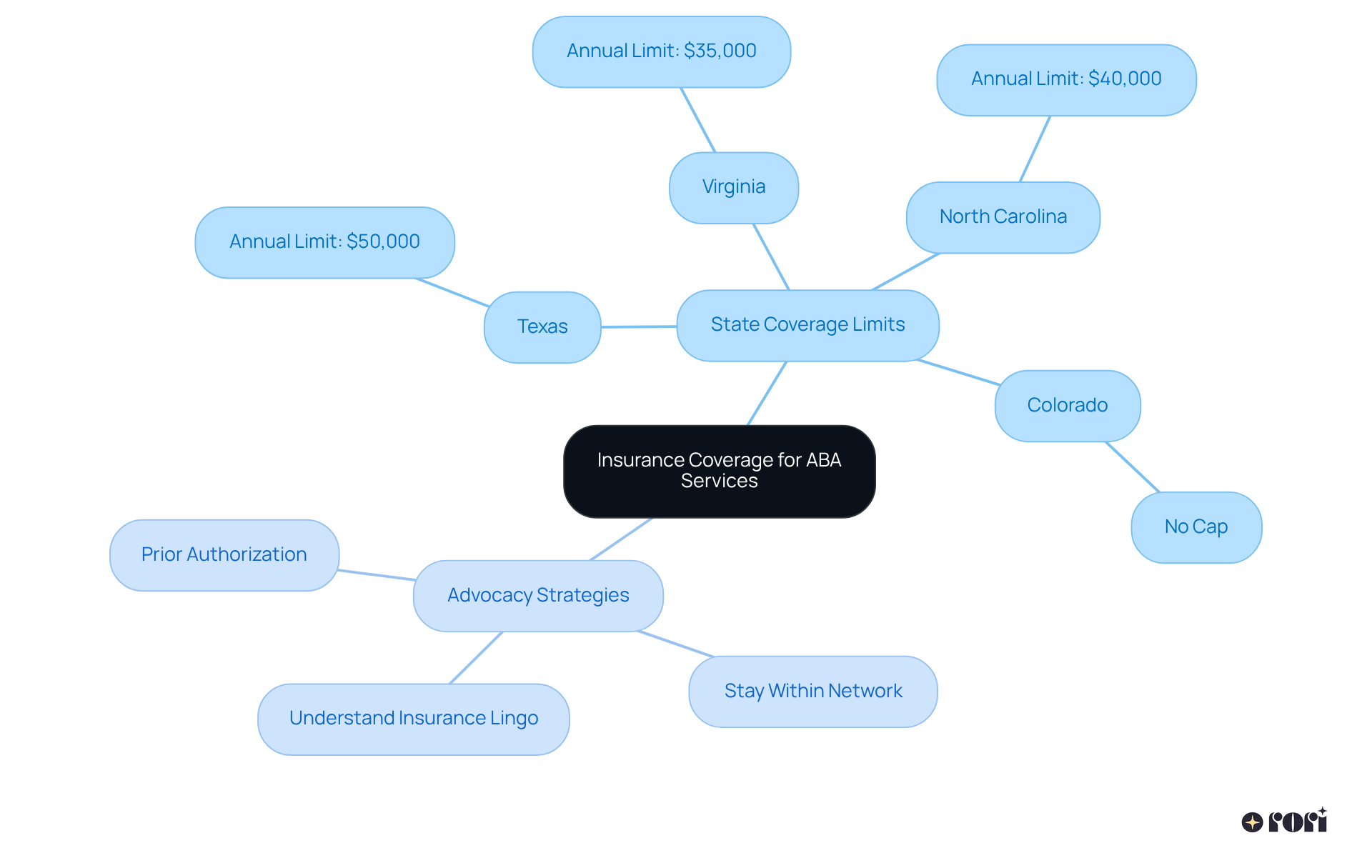
Understanding the essential ABA behavioral services available for children is crucial for parents seeking to support their child's development effectively. It’s all about finding the right fit for your little one! This article highlights the importance of personalized, data-driven approaches that cater to each child's unique needs. Early and intensive intervention can lead to significantly improved outcomes, so starting early is key.
By incorporating strategies such as behavioral assessments, parent training, and collaboration with schools, families can create a robust support system that enhances their child's learning and growth. Think of it as building a team around your child—everyone working together for their success!
Key insights discussed include:
Ultimately, navigating ABA services is a collaborative effort. It involves parents, therapists, and educators working hand in hand to foster an environment where children can truly thrive. By staying informed and engaged, parents can empower their children to achieve their fullest potential. So, let’s explore these services together and advocate for the support needed, ensuring that every child has the opportunity to grow, learn, and succeed in their unique journey. We’re here to help you every step of the way!
What is Rori Care's approach to ABA therapy for children?
Rori Care provides customized ABA behavioral services tailored to each child's unique needs, focusing on their personal challenges and strengths through thorough assessments and individualized treatment strategies.
How effective is ABA therapy for individuals with autism?
Studies show that intensive and prolonged ABA behavioral services can significantly enhance outcomes for individuals with autism, with an impressive success rate of 89% when using ABA for treating autism.
Why is early intervention important in ABA therapy?
Early and intensive intervention in ABA therapy leads to better outcomes, including improved communication and social skills, especially when reinforcement strategies are utilized.
How does Rori Care incorporate technology into its ABA services?
Rori Care uses AI technology to enhance individualized treatment plans, allowing for real-time adjustments based on the child's progress during therapy sessions.
What are the core principles of Applied Behavior Analysis (ABA)?
The core principles of ABA include reinforcement, prompting, and shaping, which are essential for effectively changing behaviors and promoting skill development.
How does reinforcement work in ABA therapy?
Reinforcement encourages desired behaviors through rewards, which can increase engagement and motivation in young individuals, crucial for their overall growth.
What role do behavioral assessments play in ABA therapy?
Behavioral assessments provide insights into a child's specific actions, triggers, and learning preferences, allowing healthcare professionals to develop tailored strategies that enhance treatment effectiveness.
What types of assessment tools are used in behavioral evaluations?
Assessment tools include direct observation and parent interviews, which help create a detailed profile that shapes the treatment plan for each child.
What outcomes can be expected from personalized interventions in ABA therapy?
Personalized interventions based on thorough evaluations can lead to significant improvements in communication, social skills, and adaptive behaviors, contributing to a success rate of over 89% for individuals with autism spectrum disorder.
What challenges do families face in accessing ABA behavioral services?
Families may encounter financial barriers and disparities in care, which can affect the availability of essential ABA services for their children.